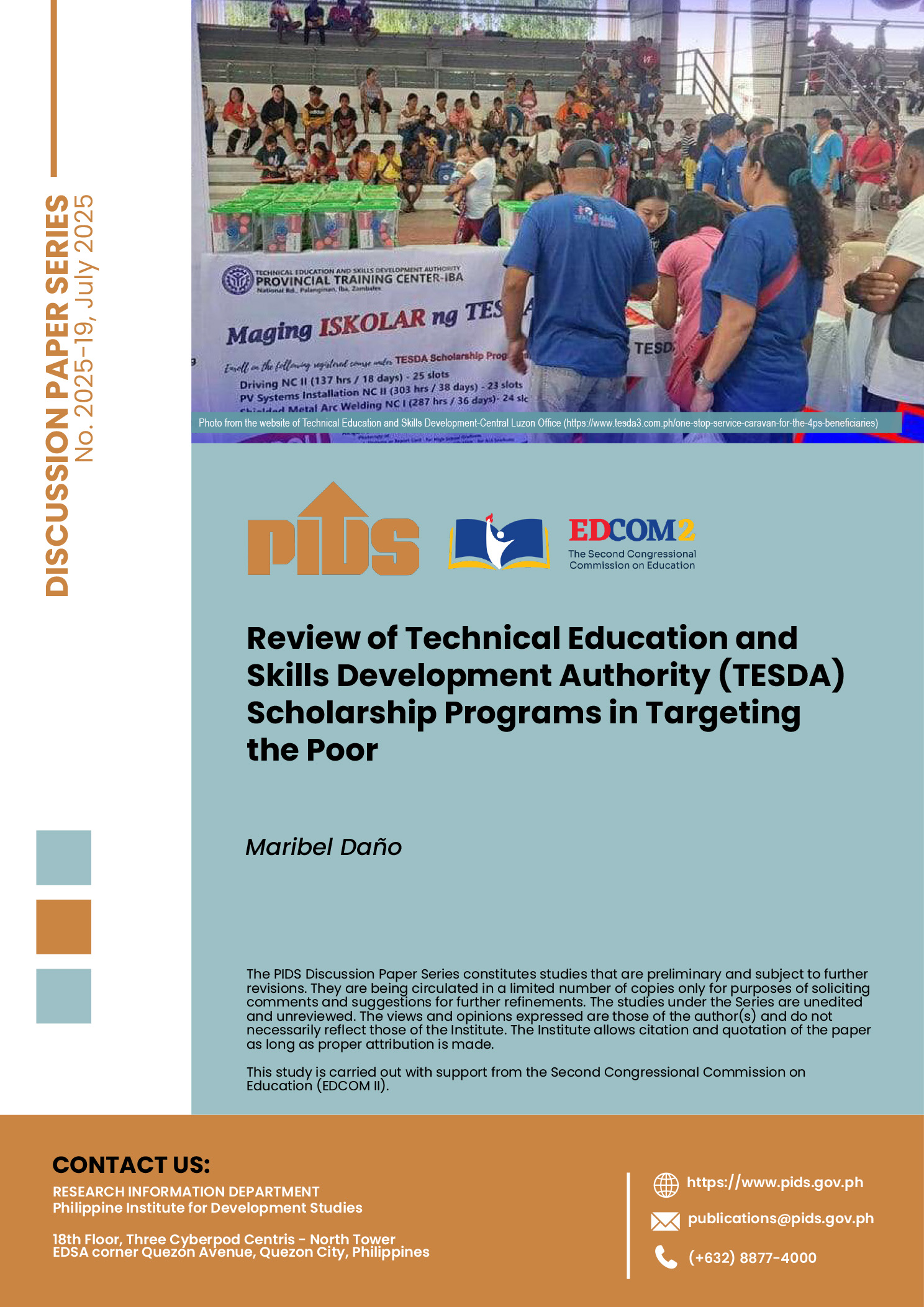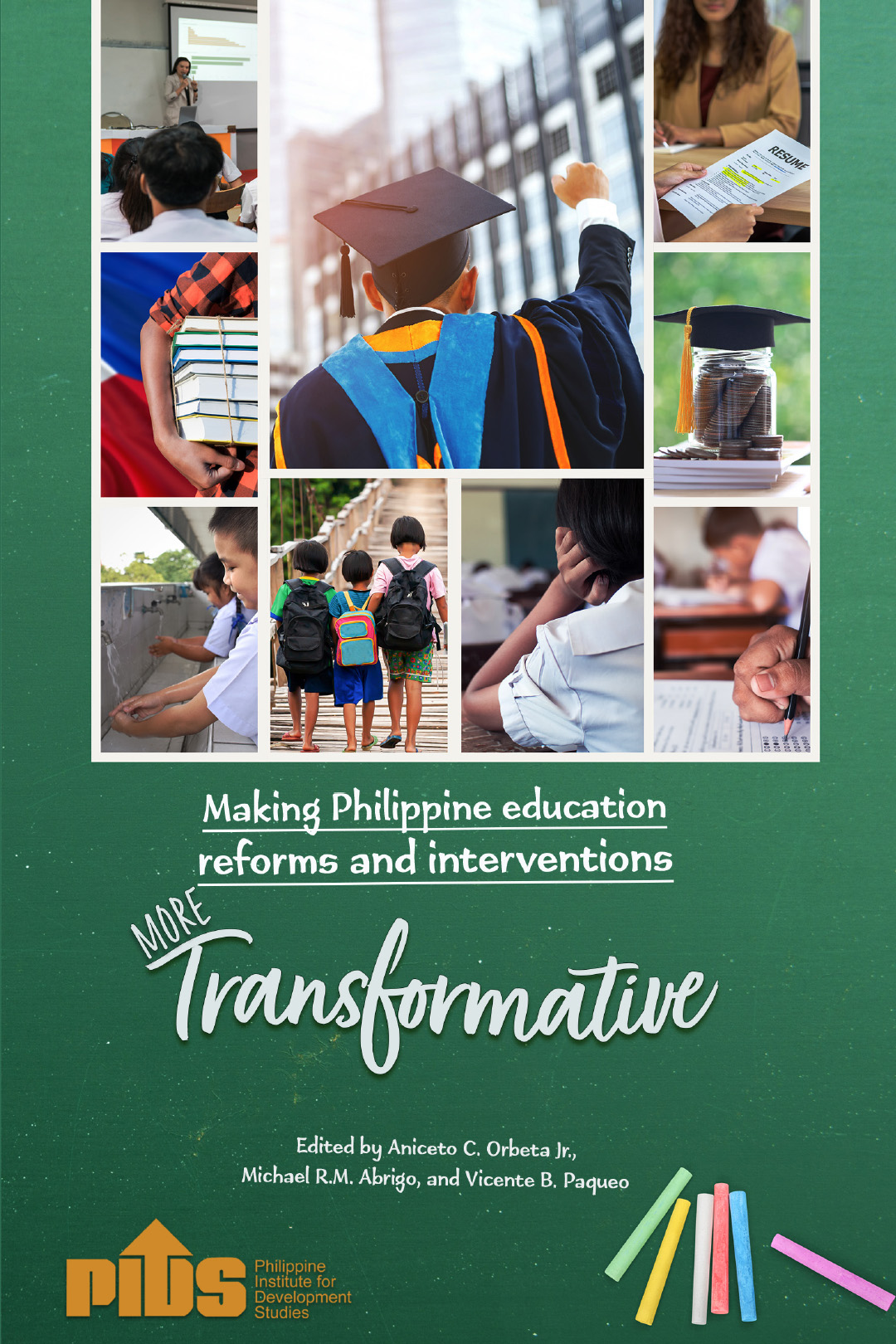As another school year ends this month, researchers at the state think tank Philippine Institute for Development Studies (PIDS) take a special look at the country`s education sector and present some ideas for reform. In the second issue of the PIDS Economic Policy Monitor (EPM) published in early March, a team of education experts provides an analysis of the education sectors achievement, direction and critical gaps in order to help the government and other education stakeholders craft the needed reform agenda that can ameliorate the sector and bolster its contribution to sustained and inclusive development.
The study, authored by PIDS Visiting Research Fellow Vicente Paqueo and PIDS Senior Research Fellows Aniceto Orbeta, Jr. and Jose Ramon Albert, notes that while there have been some positive developments in the education sector in recent years, their progress, however, has been distressingly sluggish and inadequate. In fact, education indicators have remained embarrassingly low. For instance, although gross enrollment rate has been remarkably high in recent years, dropout and repetition rates still remain high as reflected in the low primary education on time completion rate of 75 percent. Moreover, learning outcome continues to be alarmingly low as reflected in students` poor performance in the National Achievement Test. Functional literacy rate among ten-to-fifteen-year-old children is also low at only 62 percent. If such trends continue, the team fears that the county could fail to honor its Millennium Development Goals commitment of achieving universal primary education by 2015.
The research team also points out the proverbial fact that many Higher Education Institutions (HEIs) do not meet international and even local quality standards. Low expenditure in higher education (HE) is considered to be a major factor to HE`s deterioration and underperformance. In 2007, the Philippines spent less than 10 percent of GDP per capita on HE while Indonesia spent 20 percent and Malaysia spent a whopping 50 percent.
The study also examines the status of the technical and vocational education and training (TVET) which is an equally important cluster in the education sector. In the past decade, TVET has seen a surge in enrollment as the demand for skilled workers increased in both local and international labor markets. However, the study reveals that despite the high labor demand, only 34 percent of technical vocational institution (TVI) graduates found employment and only 26 percent consider their training useful for their job.
Meanwhile, the Aquino administration has committed itself to the improvement of the education sector and has begun implementing groundbreaking education reform policies. The Department of Education (DepEd), for instance, has received an increased budget to accelerate the implementation of the mother tongue-based multilingual education policy (MBTMLE) and the K-12 reform program. Similarly, the Commission on Higher Education (CHED) has also initiated reforms to improve tertiary education such as the rationalization of state colleges and universities (SUCs). TESDA is likewise seeking to improve its programs and strengthen its partnership with the private sector.
Despite these efforts, though, concerns still remain, especially on the rush implementation of the K-12 program which, according to the researchers, may have unintended effects on social equity if publicly funded. This stems from the fact that many poor families do not reach this level of educational attainment. Moreover, some experts have also expressed fear that the DepEd might be spreading itself too thinly and might lose administrative concentration by implementing too many reforms altogether, thereby risking similar reform failures as in the past.
The study, authored by PIDS Visiting Research Fellow Vicente Paqueo and PIDS Senior Research Fellows Aniceto Orbeta, Jr. and Jose Ramon Albert, notes that while there have been some positive developments in the education sector in recent years, their progress, however, has been distressingly sluggish and inadequate. In fact, education indicators have remained embarrassingly low. For instance, although gross enrollment rate has been remarkably high in recent years, dropout and repetition rates still remain high as reflected in the low primary education on time completion rate of 75 percent. Moreover, learning outcome continues to be alarmingly low as reflected in students` poor performance in the National Achievement Test. Functional literacy rate among ten-to-fifteen-year-old children is also low at only 62 percent. If such trends continue, the team fears that the county could fail to honor its Millennium Development Goals commitment of achieving universal primary education by 2015.
The research team also points out the proverbial fact that many Higher Education Institutions (HEIs) do not meet international and even local quality standards. Low expenditure in higher education (HE) is considered to be a major factor to HE`s deterioration and underperformance. In 2007, the Philippines spent less than 10 percent of GDP per capita on HE while Indonesia spent 20 percent and Malaysia spent a whopping 50 percent.
The study also examines the status of the technical and vocational education and training (TVET) which is an equally important cluster in the education sector. In the past decade, TVET has seen a surge in enrollment as the demand for skilled workers increased in both local and international labor markets. However, the study reveals that despite the high labor demand, only 34 percent of technical vocational institution (TVI) graduates found employment and only 26 percent consider their training useful for their job.
Meanwhile, the Aquino administration has committed itself to the improvement of the education sector and has begun implementing groundbreaking education reform policies. The Department of Education (DepEd), for instance, has received an increased budget to accelerate the implementation of the mother tongue-based multilingual education policy (MBTMLE) and the K-12 reform program. Similarly, the Commission on Higher Education (CHED) has also initiated reforms to improve tertiary education such as the rationalization of state colleges and universities (SUCs). TESDA is likewise seeking to improve its programs and strengthen its partnership with the private sector.
Despite these efforts, though, concerns still remain, especially on the rush implementation of the K-12 program which, according to the researchers, may have unintended effects on social equity if publicly funded. This stems from the fact that many poor families do not reach this level of educational attainment. Moreover, some experts have also expressed fear that the DepEd might be spreading itself too thinly and might lose administrative concentration by implementing too many reforms altogether, thereby risking similar reform failures as in the past.












